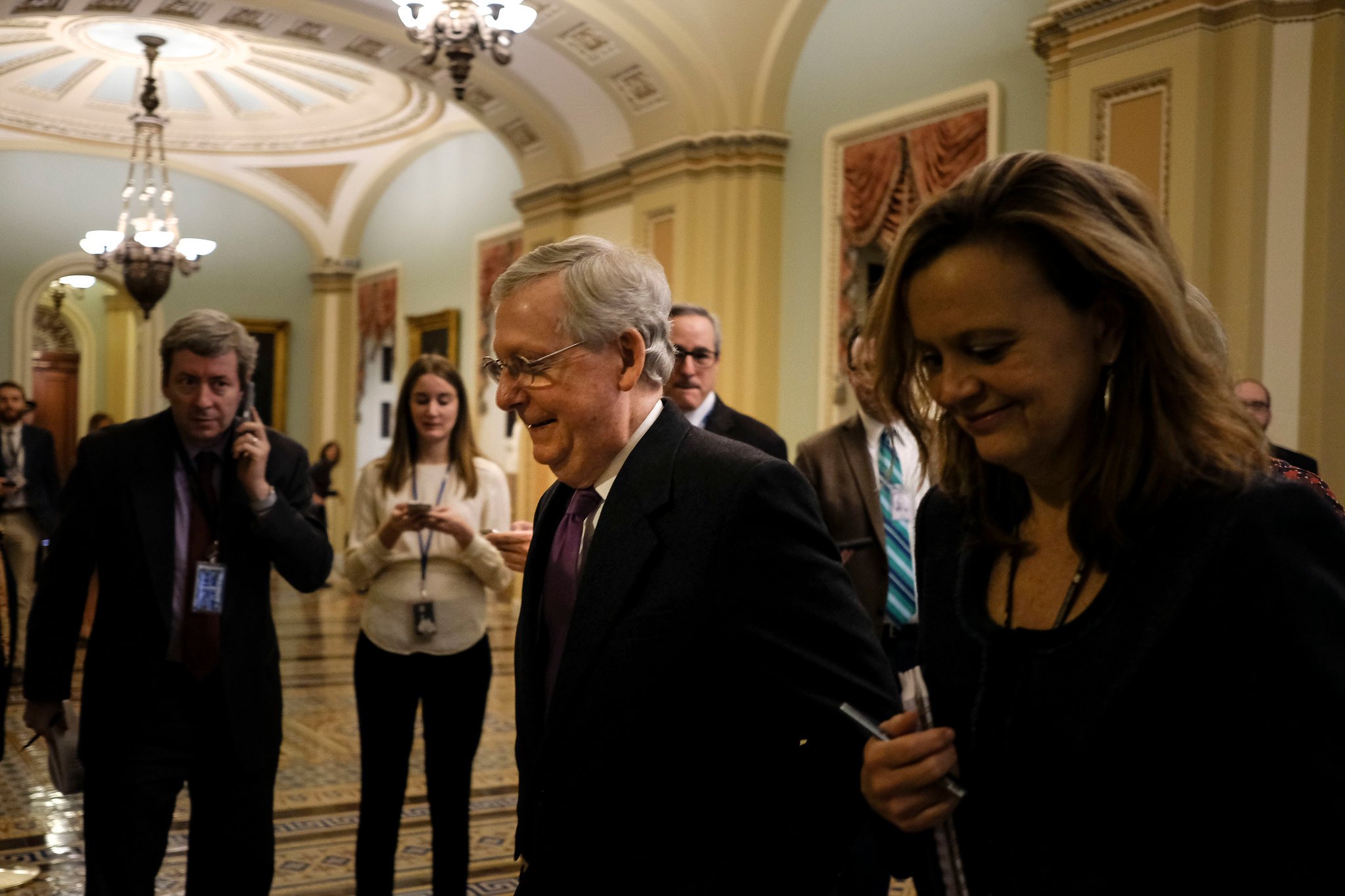
With a few more Democrats than Republicans among its members and a goal of bringing more from each side into the mix, the group intends to show that it can produce critical mass behind new immigration legislation as well as demonstrate the power of bipartisanship.
“Twenty-five senators is a quarter of the Senate so that’s a pretty powerful number of people who are able to make a difference with their votes and their voices,” said Senator Susan Collins, the centrist Republican from Maine who led the effort to organize the group.
For all their good intentions, the senators are not going to have an easy time. The Senate has become mainly an arena for political warfare, allowing the parties to thrive on doing their best to sabotage each other’s priorities. Breaking those entrenched habits will be difficult, if not impossible. Powerful forces will be aligned to prevent any immigration measure from even clearing the Senate so as to avoid putting pressure on the House and the White House to act.
While Mr. Jones just arrived from Alabama, most of the others have been venting their frustrations over the polarized nature and inertia of the Senate. They share a desire to show that Congress can work if given the opportunity for free-flowing debate and contend that party divisions can be bridged.
“Maybe it’s an alternative to some of the constant tribal warfare that goes on around here,” said Senator Joe Donnelly of Indiana, another of the red-state Democrats in the group who will be fighting for re-election this year.
Their independent push to end the shutdown sprang out of a view that the two respective Senate leaders — Mitch McConnell, the Kentucky Republican, and Chuck Schumer, the New York Democrat — were locked in a partisan staredown that was leading nowhere.
Leadership was just “ jousting back and forth,” said Senator Joe Manchin III, the West Virginia Democrat who, along with Ms. Collins, played a primary role in assembling the group.
Members of the coalition say the present Senate frequently operates too rigidly along party lines.
“My critique of this place is that everything gets run by the caucuses,” Mr. Kaine said, “And of course I want the caucuses to be strong and I strongly support my caucus leader. But there’s got to be some noncaucus space where people can work together, not just with folks in the same party.”
In recent years under both Democratic and Republican rule, the Senate has been a constrained institution, with highly centralized decision making by leaderships that miserly limits amendments to prevent their members from having to take politically tough votes. With just a few exceptions, the major legislative packages that have reached the floor were the product of the majority and any fights were over Senate process rather than substantive policy.
It is a far cry from the Senate’s storied image as the world’s greatest deliberative body with full-throated give-and-take and rousing speeches that win over opponents.

Credit
Gabriella Demczuk for The New York Times
“I’ve been here since 2009 and I have never seen the kind of the glory days description,” said Senator Mark Warner, Democrat of Virginia, one of many former governors who over the decades has found the chamber a stultifying place to serve.
In tackling immigration, the group is taking on an issue that for years has defied congressional solutions. Now the group is racing against two deadlines — Feb. 8, when the current stopgap spending bill expires, and March 5, the deadline set by President Trump to find a way to protect undocumented immigrants brought to the United States as children.
But members of the group, energized and empowered by their success in shutting down the shutdown, remain positive. They hope the process ends with legislation that could attract as many as 70 senators — the kind of bipartisan majority that would be difficult for either the president or the House to ignore.
Mr. McConnell reiterated again on Tuesday that as long as Democrats agreed to keep the government funded, he would allow a “fair and open process” meant to end with a new immigration measure.
“Whoever gets 60 votes wins,” he said.
Those engaged in the bipartisan effort say they realize the difficulties ahead but are eager to get started.
“I’m just glad to have the prospect of legislating again,” said Senator Jeff Flake, Republican of Arizona. “We don’t have a functioning body right now.”
While the possibility of a wide-open floor fight on immigration has no doubt made some senators nervous as they weighed the prospect of tricky votes, others have found it invigorating.
“Now comes the test — the real test — as to whether we can get this done — whether we can be the Senate again,” said Senator Richard J. Durbin of Illinois, the No. 2 Senate Democrat, who will be working with the group, addressing his colleagues on the floor. “For some of you, it will be the first time you have ever seen it, but believe me, it is worth the price of admission, all it took for you to come to the U.S. Senate.”
If successful, the bipartisan push could become a model for taking on stubborn issues in the future, one that engages a broader range of voices and ideas from both parties in the outcome. But if it fails, it could mean that intense partisanship has pushed the Senate into a place where even the most determined efforts cannot save it.
Continue reading the main story
Powered by WPeMatico

